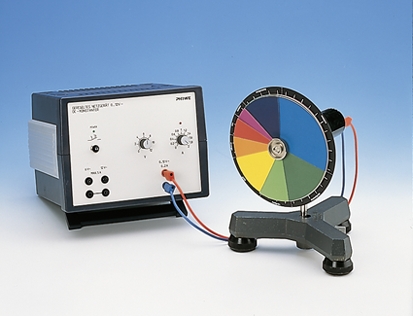Principle
If a circular disc separated into various differently coloured sectors is rotated by a motor so fast that the eye can no longer distinguish the colours, a mixed colour is then perceived. By varying the composition and size of the sectors, it is possible to give the impression of any colour at all. The colour triangle can be used to predict what the perceived colour will be.
Benefits
- Rotational speed of colour disk can be varied
- Percentage of the different colours of the colour disk can be adjusted
Tasks
Reproduce the perception of a mixed colour or of white using rotating coloured discs with 2 to 8 sectors of various colours.
Learning objectives
- Aligning discrimination
- Colour receptors
- Colour mixing
- Physiological impression of mixed colours

